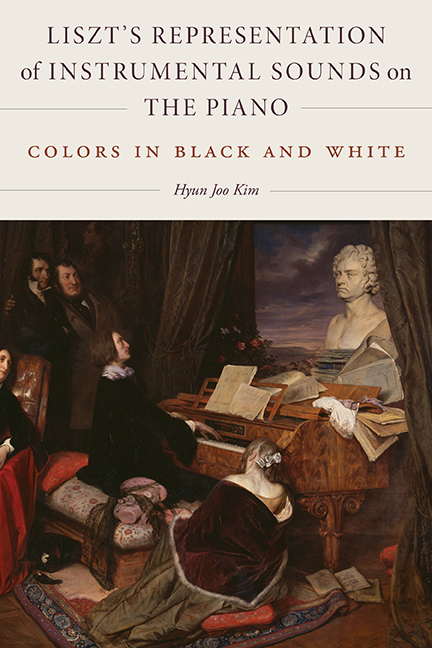Book contents
- Frontmatter
- Contents
- Introduction
- 1 Approaching the Reproductive Arts
- 2 “Partitions de Piano”
- 3 Between “Text” and “Event”: Liszt's Guillaume Tell Overture
- 4 Translating the Orchestra: Liszt's Two-Piano Arrangements of His Symphonic Poems
- 5 Interpretive Fidelity to Gypsy Creativity: Liszt's Representations of Hungarian Gypsy Cimbalom Playing
- Conclusions: Recurring Techniques and Aesthetics
- Appendix: Liszt's Preface to His Piano Arrangements of Beethoven's Fifth and Sixth Symphonies in the Breitkopf & Härtel Edition, 1840
- Notes
- Bibliography
- Index of Liszt's Works by Genre
- Subject Index
2 - “Partitions de Piano”
Published online by Cambridge University Press: 06 September 2019
- Frontmatter
- Contents
- Introduction
- 1 Approaching the Reproductive Arts
- 2 “Partitions de Piano”
- 3 Between “Text” and “Event”: Liszt's Guillaume Tell Overture
- 4 Translating the Orchestra: Liszt's Two-Piano Arrangements of His Symphonic Poems
- 5 Interpretive Fidelity to Gypsy Creativity: Liszt's Representations of Hungarian Gypsy Cimbalom Playing
- Conclusions: Recurring Techniques and Aesthetics
- Appendix: Liszt's Preface to His Piano Arrangements of Beethoven's Fifth and Sixth Symphonies in the Breitkopf & Härtel Edition, 1840
- Notes
- Bibliography
- Index of Liszt's Works by Genre
- Subject Index
Summary
Concept
Liszt used the term partition initially for his arrangement of Berlioz's Symphonie fantastique (1834) in a letter to Adolphe Pictet in 1838:
If I am not mistaken, I am the one who first proposed a new method of transcription in my piano score of the Symphonie fantastique. I applied myself as scrupulously as if I were translating a sacred text to transferring, not only the symphony's musical framework, but also its detailed effects and the multiplicity of its instrumental and rhythmic combinations to the piano. The difficulty did not faze me, as my feeling for art and my love of it gave me double courage. … I called my work a partition de piano [piano score] in order to make clear my intention of following the orchestra step by step and of giving it no special treatment beyond the mass and variety of its sound.
Through his designation of partition, Liszt explicitly claims that he is ushering in “a new method” for a piano arrangement by underscoring his fidelity to the original. By “following the orchestra step by step,” he determines to remain unremitting in his goal of “scrupulously” rendering the original as if treating it as a “sacred text.” In addition to his adherence to the structure of the symphony (“the symphony's musical framework”), Liszt aims at capturing the nuanced, variegated effects of the orchestral sounds (the “detailed effects” and “the mass and variety of [the orchestra]'s sound”) as well as the intricacy of the orchestral textures (the “multiplicity of its instrumental and rhythmic combinations”).
In the same letter to Pictet, Liszt also continues to discuss the compositional procedure and aesthetic underlying his partition of Berlioz's Symphonie fantastique, from which another group of his partitions of Beethoven's symphonies is extrapolated, relating the two groups of arrangements to each other:
The procedure I followed for Berlioz's symphony I am currently applying to those by Beethoven. The serious study of his works, a profound feeling for their virtually infinite beauty and for the piano's resources, which have become familiar to me through constant practice, have perhaps made me less unfit than anyone for this laborious task.
- Type
- Chapter
- Information
- Liszt's Representation of Instrumental Sounds on the PianoColors in Black and White, pp. 37 - 56Publisher: Boydell & BrewerPrint publication year: 2019



